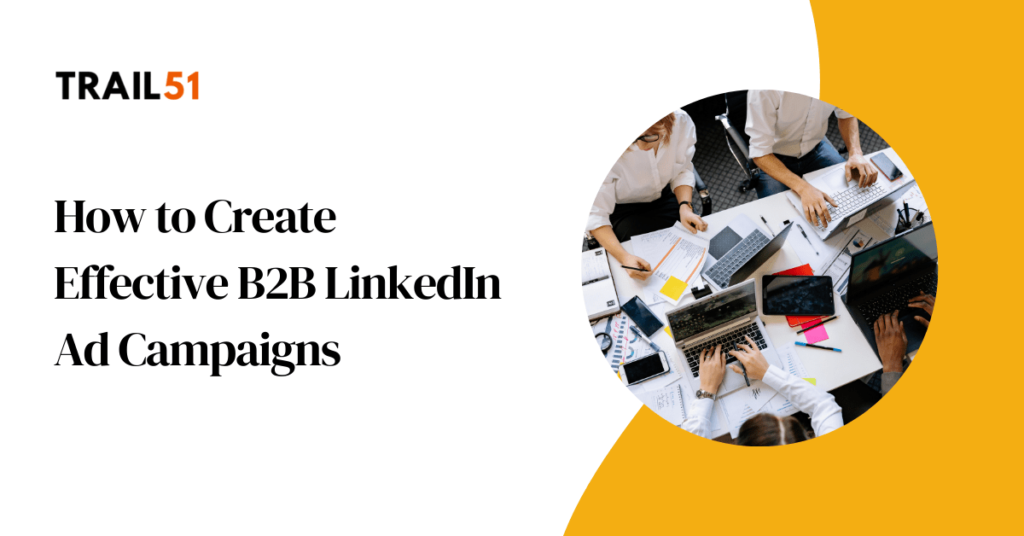Key takeways
- Leverage diverse content types—case studies, social proof, and thought leadership—to nurture leads effectively.
- Target specific audience segments like MQLs, content downloaders, and webinar attendees for personalized campaigns.
- Use dynamic content and audience-specific strategies to guide prospects through the decision-making process.
Introduction
Meta Ads (formerly Facebook Ads) offer great opportunities for B2B marketers looking to nurture their leads effectively. The key to success lies in selecting the right content and precisely targeting your audience. Case studies, trust-building materials, or urgency-driven content—all these help guide potential customers through the sales funnel, turning interest into action.
This guide provides practical tips on how to use Meta Ads to build trust, showcase expertise, and prompt quick decisions.
Examples of B2B lead nurturing ads
Meta Ads allow you to connect with your audience using a variety of content strategies. Here are some of the best types of content you can use to nurture leads effectively:
Case Studies: Building Trust Through Success Stories
Case studies show your audience how your product or service has solved real challenges for businesses like theirs.

- What It Is: In-depth stories showcasing client success.
- Typical Content: Before-and-after metrics, client testimonials, and measurable outcomes.
- Example: “How Company X Improved Lead Conversion by 35% with Meta Ads.”
By presenting clear, data-driven results, case studies offer tangible proof of your solution’s value.
Summary: Case studies are a powerful tool to demonstrate credibility and foster trust with leads.
Building Social Proof: Establishing Credibility
Social proof validates your brand’s credibility through the experiences of others.
- What It Is: Strategies and materials showcasing trustworthiness.
- Typical Content: User-generated posts, influencer endorsements, press mentions, and industry certifications.
- Example: “As Seen On” badges or client shout-outs on social media.
Highlighting these elements builds confidence in your brand.
Summary: Social proof ensures leads feel reassured about choosing your solution.
Highlighting Differentiators: Why You Stand Out
Showcase what makes your offering unique to attract and retain attention.
- What It Is: Content emphasizing your unique selling propositions (USPs).
- Typical Content: Comparison charts, feature highlights, and infographics.
- Example: “Why Our CRM Integration Outperforms Competitors.”
This type of content positions your brand as the superior choice.
Summary: Differentiators set your product apart, helping leads recognize your unique value.
Creating a Sense of Urgency: Driving Immediate Action
Urgency motivates prospects to act quickly by highlighting time-sensitive opportunities.
- What It Is: Tactics that encourage immediate decision-making.
- Typical Content: Limited-time offers, countdown timers, and market trend alerts.
- Example: “Sign Up Today for 20% Off—Offer Ends Tomorrow.”
This approach creates a psychological push toward action.
Summary: Urgency-driven content turns hesitation into quick conversions.
Thought Leadership: Establishing Authority
Position your brand as an industry expert with high-value content.
- What It Is: Insightful and authoritative content that builds trust.
- Typical Content: Whitepapers, opinion articles, research reports, and webinars.
- Example: “Emerging Trends in B2B Marketing for 2025.”
Sharing deep insights establishes your expertise and keeps leads engaged.
Summary: Thought leadership reinforces your authority and fosters long-term engagement.
Engaging Leads Through Owned Media
Expand your connection with leads by inviting them to join other owned media channels.
- What It Is: Invitations to engage with your brand beyond Meta Ads.
- Typical Content: Newsletter sign-ups, podcast subscriptions, and LinkedIn group invitations.
- Example: “Join Our Community for Exclusive Insights.”
This strategy builds lasting relationships with prospects.
Summary: Owned media channels deepen engagement beyond the ad campaign.
Audience Segments for B2B lead nurturing ads
For successful Meta Ads lead nurturing, it’s essential to target specific audience groups who already have some level of brand familiarity. Here’s a breakdown of the key segments:
- Marketing-Qualified Leads (MQLs): Individuals who have shown high intent or engagement (e.g., downloaded multiple resources, attended webinars) and are already labeled as MQLs in your CRM.
- Website Visitors (Engaged): Users who have visited key pages (pricing, product features, resources) multiple times, indicating deeper interest in your offerings.
- Content Downloaders: Prospects who specifically filled out a form to download an eBook, white paper, or case study, signaling strong interest in your content and brand.
- Webinar Attendees/Registrants: Contacts who signed up for or attended your webinars, already demonstrating an interest in learning more about your solutions.
- Email Subscribers (Opened/Clicked Emails): Leads who actively engage with your email campaigns by opening or clicking through newsletters or updates.
- Video Viewers: Users who watched a significant portion (e.g., 50% or more) of your Facebook or YouTube videos related to your products or services.
- Retargeting Audience (Form Abandoners): Visitors who started filling out a lead form but did not complete it, indicating strong interest but requiring additional motivation to convert.
- Existing Leads or Trial Users in Your CRM: Contacts who have tested a free trial, used a demo, or interacted with a sales rep but have not yet made a purchase decision.
- Social Media Engagers: Prospects who have liked, commented on, or shared your brand’s social media posts, showing they resonate with your content.
- Past Event Attendees: Individuals who attended offline events or trade shows you hosted or sponsored, indicating a higher level of brand awareness and potential interest.
Summary: These audience segments allow for highly relevant and personalized ads tailored to their specific stage in the decision-making process, ultimately moving them closer to becoming qualified leads and customers.
FAQ
They demonstrate real-world success and provide measurable proof of your solution’s value.
It reassures leads by showcasing endorsements, reviews, and other forms of validation.
It encourages faster decision-making by emphasizing time-sensitive opportunities.
Conclusion
Meta Ads provides a versatile platform for nurturing B2B leads effectively. By leveraging diverse content types—from case studies to thought leadership—and targeting precise audience segments, you can build trust, establish authority and drive meaningful conversions.



